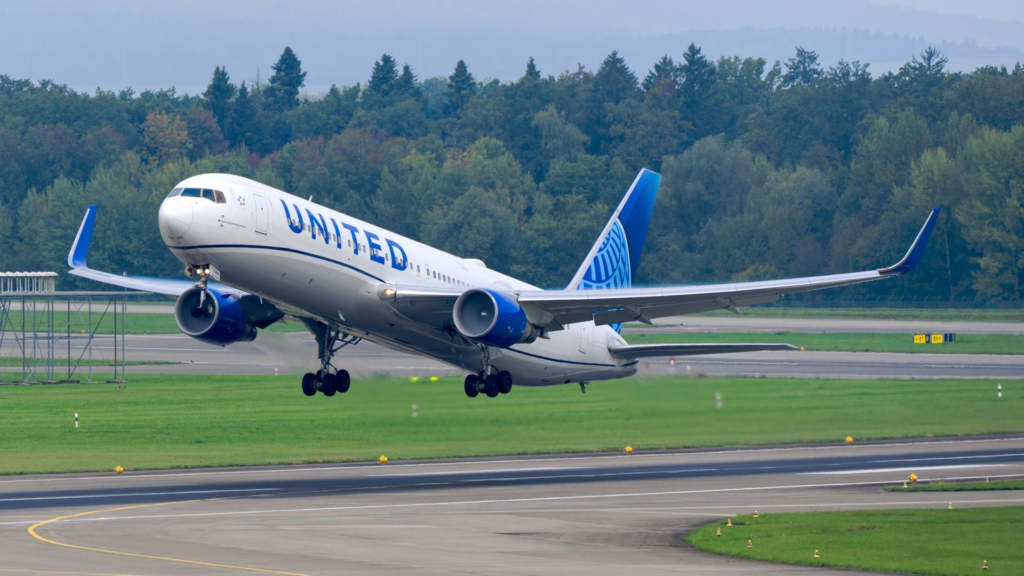Yesterday, we reported that ![]() United Airlines (NYSE: UAL) had outperformed analyst expectations, with strong premium growth and improved international travel demand leading the carrier’s third-quarter adjusted earnings per share (EPS) to sit modestly above Wall Street’s consensus. Under most circumstances, this would be a strong signal for the carrier, and it would incentivize investors to buy the stock and thus cause prices to go up.
United Airlines (NYSE: UAL) had outperformed analyst expectations, with strong premium growth and improved international travel demand leading the carrier’s third-quarter adjusted earnings per share (EPS) to sit modestly above Wall Street’s consensus. Under most circumstances, this would be a strong signal for the carrier, and it would incentivize investors to buy the stock and thus cause prices to go up.
However, shares tumbled today, despite this impressive earnings performance. Shares slid from around $104 to as low as $94.75 by mid-afternoon, demonstrating losses of around 9%. Although a later rally led shares to close down only around 5%, this is undeniably surprising based on the airline’s outperformance. We analyze the impact that United’s rhetoric had on the market today, and what led the airline’s stock to decline so significantly in Thursday’s trading.
What Exactly Happened Today?
United Airlines shares fell around 9% in intraday trading after the airline reported a Q3 earnings beat. Despite earnings outperformance, the carrier fell short of Street expectations in terms of revenues, and the airline’s earnings call highlighted a number of pressure points that spooked investors and led shares to trade lower. United Airlines revenues ultimately missed the Street’s expectations for the third straight quarter.
Total revenues per available seat mile (TRASM) fell by around 4% year-on-year, a figure which undercut the airline’s durable pricing narrative. Airline momentum is beginning to skew towards premium and loyalty, while the core unit revenue trend remains disappointingly soft. The airline also highlighted how costs are increasing going into the fourth quarter, which implies a messier margin and free cash flow picture even as the airline guides profits to be higher.
A Deeper Look At What Concerned Investors
Management ultimately guided fourth-quarter EPS to be above the Street, and the airline’s leadership team highlighted the carrier’s strength in premium markets and that of its loyalty program. The carrier also, however, flagged the timing of expenses heading into the fourth quarter. The airline also continued to highlight Newark-related operational constraints, with the government shutdown only continuing to make matters worse.
Beyond all of this, the airline is going to be stepping up its customer-experience spending. The combination of a revenue miss and declining unit revenues, in addition to higher near-term spending and cost timing, was a factor that immediately concerned investors and led them to sell the stock today despite the headline actually framing record fourth-quarter revenues. As a result, the share price declined significantly despite earnings actually exceeding most expectations.
This is a classic example of a sell-the-news style event, a situation in which rhetoric actually drives stock price movements more than direct fundamentals. The comments made by United’s leadership team during today’s earnings call led the stock to take a nosedive in a way that analysts could not have predicted. Specifically, their comments on cost rhetoric and operational constraints overpowered investor excitement that did exist surrounding the airline’s performance in premium markets.
What Does All Of This Mean For United Airlines?
At the end of the day, United Airlines is now in a position where investors are a bit more cautious than they were about the company. The carrier had been one of the highest-rated stocks within the airline industry by most analysts, who had touted the airline’s ability to target a premium-oriented customer base while maintaining operational diligence.
It, however, is beginning to appear less likely that the carrier will actually follow through with these plans. What is now more concerning is the airline’s expensive expansion initiatives that it is pushing forward, and its overreliance on a Newark hub, which continues to prove an operational nightmare.
The catalyst matrix for evaluating United’s performance has undeniably shifted as a result of today’s commentary. Investor confidence has been shaken, despite the fact that the airline actually guided to higher profits in the short term. Other US airline stocks were also down today, including some premium-oriented carriers like Delta Air Lines.





